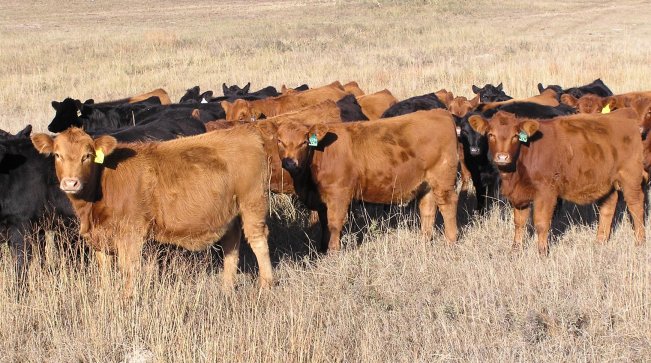Retaining and raising replacement heifers this year may be a tough decision for producers with limited feed availability. But given the shrinking size of the female herd, there are also opportunity costs to consider moving into 2024.
Kansas State University’s (KSU) experts with the Beef Cattle Institute (BCI) recently discussed some key considerations for retaining replacement heifers this fall. It’s all about time, labor and resources and the risks tied to those decisions.
Bob Larson, Kansas State veterinarian, likes to think about raising replacements as “keeping your best bets.” In other words, he said, choose those females you believe will make a good long-term cow.
Characteristics in Larson’s “best bets” list include:
1. Look for older heifers, those born earlier in the calving season. They are more likely to get pregnant earlier in the breeding season.
2. Choose heifers out of really good dams, with the disposition and functionality that best fits your operation.
3. Make sure the heifer has a genetically strong sire.
Beyond this, Larson cautions against keeping more replacement heifers than you need. “So, it’s not just if I’m going to keep replacement heifers, but how many. There might be a heifer out of a good cow and a good bull, but if she is born late in the season, I don’t think I’m going to keep her,” he said.
Phillip Lancaster, another cattle expert working with the BCI team, added it’s important to know how much you expect replacement heifers to grow between weaning and breeding, and to consider if you have the resources to meet those growth needs.
“It depends on the mature size of your cows,” he said. “But you are probably looking at putting 300 pounds on them, so calculate how much they need to gain per day and consider your resources and feed supplies.”
Lancaster added it might pay to think outside of the box. In a year like this, for example, it may make economic sense to sell heifers and then look to buy bred cows or bred heifers come spring, eliminating the need to feed over the winter. In other words, pencil out the opportunity costs of keeping heifers, compared to other options.
COSTS OF CARRYING COWS THIS WINTER
The same kinds of considerations go into whether it makes sense to carry the whole cow herd this winter or cull some now.
Andrew Griffith, with the University of Tennessee’s department of agricultural and resource economics, said now is a good time to calculate cost of production and then make management decisions based on what that tells you.
“What is the largest cost of production in the cattle business?” he asks in a recent column. “Most people would say feed, which would be purchased feed, hay, and pasture. But the biggest cost category in most cattle operations is owning the cattle. It is easy to see from the stocker or feedlot perspective that purchasing the animals is a tremendous cost. But owning the animal is also the largest cost in the cow-calf business. It is clearly witnessed when a bred female is purchased, but it’s more often experienced when a producer retains a heifer to put back in the breeding herd instead of selling the heifer. The cost of that animal was her value at weaning plus the cost of getting her to calve.”
Costs like interest, land rent, marketing, and depreciation are often overlooked, said Griffith.
“Every dollar that is used in the cattle herd has an interest expense, because that money could be doing something else to earn a dollar,” he explained. “The failure to apply a land rent cost to owned land is a mistake, because that land could be rented to someone else. The truth of the matter is that producers should apply a cost to these categories (interest, land rent, marketing, depreciation) to gain a better understanding of a return to their management.”
It’s important to consider all production costs, said Griffith, because it’s those costs that influence profits, regardless of how high cattle prices are at a given time.
###
DTN


